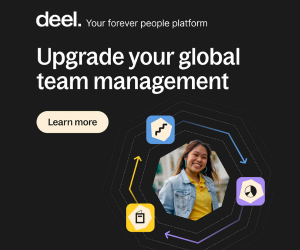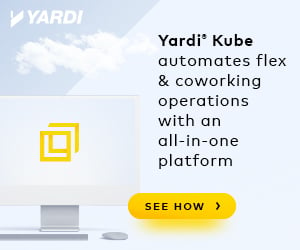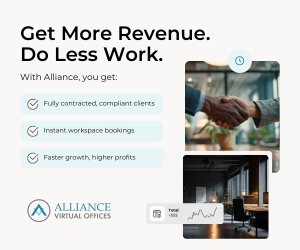- The U.S. faces a talent shortage with 8.2 million job openings and 7.2 million unemployed workers.
- Upskilling is essential to close skills gaps and meet emerging tech demands in fields like AI and cybersecurity.
- Building a resilient talent pipeline requires a skills-based approach, focusing on personalized learning, partnerships with schools, and overcoming challenges like budget constraints and low engagement.
The U.S. labor market is experiencing a critical talent shortage driven by an aging workforce, limited childcare options, and a mismatch between education and industry needs.
With 8.2 million job openings and only 7.2 million unemployed workers, traditional hiring methods fall short. Rapid technological advances and emerging skill requirements add to the challenge.
In truth, the need to close the skills gap and embrace an AI-driven future has never been more urgent.
Businesses must embrace change now by investing in upskilling and developing a culture of continuous learning.
The Value of Upskilling in the Workplace
Upskilling equips employees with the skills to remain competitive and helps organizations build resilient internal talent pipelines. Investing in upskilling and employee development enables organizations to adapt to change while boosting retention, productivity, engagement, and performance.
Upskilling extends beyond teaching new skills to ensure employees are ahead of industry trends and prepared for the future of work.
Prioritizing training in key areas such as AI and automation helps businesses mitigate risks and seize new opportunities (ensuring future readiness).
Emerging technologies such as AI, machine learning, and cybersecurity drive the demand for a highly skilled workforce. However, talent shortages persist, with 418,500 digital and tech roles projected to remain unfilled annually. This need includes operational roles in finance, HR, logistics, green energy, and healthcare requiring digital skills.
As automation and AI rise, a recent McKinsey report highlights that up to 30% of work hours may be automated by 2030, putting repetitive tasks at risk.
Yet, this transition also increases demand for STEM and healthcare professionals, highlighting the urgent need for upskilling.
How to Build a Robust Internal Talent Pipeline in 5 Steps
Organizations should implement a skills-based strategy to develop a resilient and adaptable talent pipeline that addresses labor and skill shortages and ensures future readiness. This approach prioritizes skills and abilities, moving beyond traditional methods focused on credentials or past roles.
Below are five actionable skills-based steps businesses can take to create a robust internal talent pipeline:
1. Assess Skill Gaps
The foundation of a robust talent pipeline is a clear understanding of existing skill gaps. Organizations with a skills-focused culture are 63% more likely to achieve key workforce outcomes, including exceeding financial targets.
Key Insight: Identifying and closing skills gaps is essential for aligning employee capabilities with organizational needs.
Actionable Tips:
- Leverage AI-powered platforms to analyze workforce profiles, including hard skills (e.g., programming) and soft skills (e.g., communication), for real-time gap analyses.
- Broaden recruiting pipelines by focusing on potential and transferable skills rather than strict credentials.
- Offer employees clear pathways for upskilling, promoting career mobility and growth.
- Invest in survey and analytical resources. These applications can effectively measure employee engagement and obtain feedback on upskilling initiatives.
2. Create Personalized Learning Pathways
Tailoring upskilling programs ensures employees develop skills matched to their roles and career aspirations.
Example: Workday’s innovative gig-based system enables employees to take on short-term assignments that align with their interests, leading to more internal mobility and higher satisfaction.
Actionable Tip: Utilize HR analytics and AI to design personalized learning pathways, ensuring alignment between individual strengths and organizational objectives. Tools such as human capital management (HCM) systems can help organizations design adaptable training plans that evolve with changing needs.
3. Collaborate with Educational Institutions
Building partnerships with universities, online platforms, and industry experts bridges the gap between education and industry requirements.
Research Insight: According to YouScience, 90% of employers advocate for stronger collaborations with schools, internships, and career readiness programs. Early engagement with students through apprenticeships and career exploration initiatives can help businesses cultivate a pipeline of future talent.
Actionable Tip: Partner with local educational institutions to align curricula with industry needs, offering hands-on training and work experience to cultivate future-ready talent.
4. Implement Blended Learning Models
Blended learning combines traditional in-person education with online courses, mentorship, and on-the-job training, which provides flexibility while ensuring comprehensive skill development.
Actionable Tip: Develop training programs that combine e-learning modules, live workshops, and real-world projects to accommodate diverse learning preferences.
5. Develop a Culture of Continuous Learning
Encouraging employees to embrace lifelong learning is essential for maintaining a sustainable talent pipeline.
Key Insight: Companies with a skills-focused culture are 63% more likely to surpass key workforce goals.
Actionable Tip: Reward skill acquisition with clear career progression opportunities and ensure that organizational leaders model the importance of ongoing learning to promote a culture of continuous development.
Real-World Examples of Sustainable Talent Pipelines
Several organizations have pioneered strategies to build sustainable talent pipelines by combining upskilling with advanced technology.
A notable example is the U.S. Chamber of Commerce Foundation, which emphasizes upskilling as a key partnership between employers and workers to maintain business-critical skills.
The Foundation’s Talent Pipeline Management (TPM) initiative adapts supply chain principles to workforce development, creating better career pathways. Initially focused on external hiring, TPM now includes upskilling to support internal talent growth.
In 2019, the Foundation updated its TPM Academy curriculum based on industry feedback, highlighting the value of combining external recruitment with internal development strategies.
This approach enhances talent pipelines and links hiring with upskilling. Their resources are publicly available, allowing other organizations to adopt these practices.
Additional Case Studies of Upskilling Success
Several organizations have built successful upskilling pipelines by integrating technology with employee development. These case studies highlight how these efforts drive sustainable talent growth:
- AlphaSights: This global knowledge-on-demand company develops continuous learning by empowering internal experts to create in-house training courses. As a result, they doubled their workforce and significantly boosted employee engagement.
- Procter & Gamble: With their Build from Within initiative, P&G nurtures recent graduates through customized training and real-time feedback, enhancing innovation and improving employee retention.
- Unilever: Using AI-driven assessments and gamified evaluations, Unilever transformed its recruitment process, screening over 250,000 applicants annually. This approach resulted in a 16% increase in diverse hires and strengthened leadership pipelines.
- Deloitte & The Manufacturing Institute: This partnership brings together manufacturers to address skills gaps through long-term regional collaborations, ensuring sustainable talent development and preparing for future workforce needs.
Barriers (and Solutions) to Effective Upskilling Programs
Building effective talent pipelines through upskilling initiatives can present challenges, including budget constraints, time limitations, and employee resistance.
A major issue is the skills mismatch caused when rapid technological advancements outpace employees’ current abilities, complicating the creation of relevant training programs. The significant resources required for comprehensive upskilling, low employee engagement, and lack of immediate career benefits can further hinder progress.
A key solution to overcoming these barriers is for organizations to integrate upskilling into their long-term business strategies and secure robust leadership commitment.
Embedding emerging skills — such as green and tech-based competencies — into daily roles can help future-proof the workforce and promote sustainability.
Companies should measure the success of their upskilling efforts through clear metrics, such as employee engagement, skill progression, and ROI, to ensure accountability and continuous improvement.
By committing to targeted solutions and engaging in continuous learning, businesses can establish effective talent pipelines to meet future technological and market demands head-on.


 Dr. Gleb Tsipursky – The Office Whisperer
Dr. Gleb Tsipursky – The Office Whisperer Nirit Cohen – WorkFutures
Nirit Cohen – WorkFutures Angela Howard – Culture Expert
Angela Howard – Culture Expert Drew Jones – Design & Innovation
Drew Jones – Design & Innovation Jonathan Price – CRE & Flex Expert
Jonathan Price – CRE & Flex Expert














